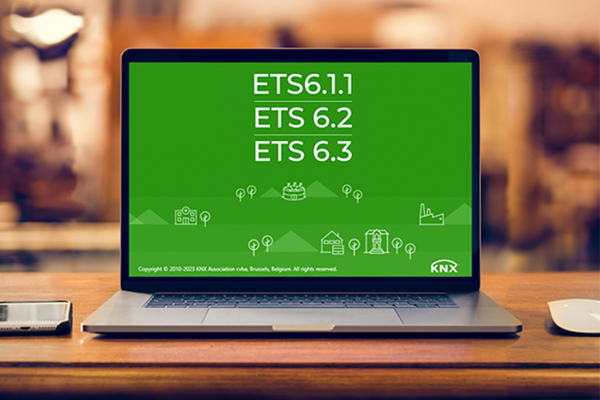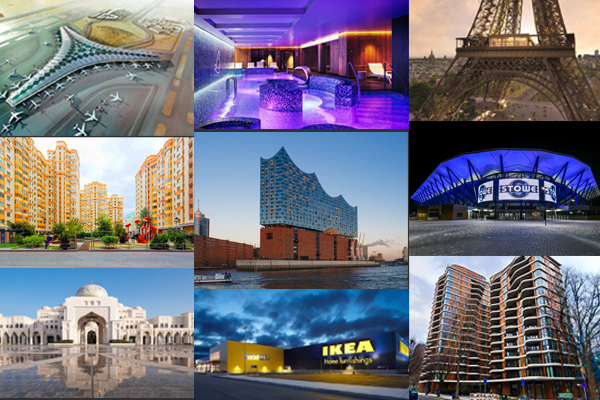
Simon Buddle takes a look at how KNX has gone from strength to strength over the past 34 years, and pays tribute to its core strengths.
I’m not sure I can remember what I was doing last week, let alone 34 years ago. However last week was different; I was in an RV driving through the Canadian Rockies with Starlink as my only connection to the outside world. If you get the chance, go! It is breathtakingly beautiful.
1990 – 34 years ago – for me, at least, seems so far in the dim and distant past that I had to look it up on the Internet. I hadn’t even heard of the Internet then, didn’t have a mobile phone and still sent postcards home when on holiday. I worked in a Hi-Fi shop and spent most of my days building Linn LP12 Sondek turntables.

Wow how things have changed.
To think that in 1990 it was possible to purchase a building automation system that could still be used, serviced, and upgraded today is almost beyond belief, and therefore worth a huge shout out to the people who created KNX and continue to drive its evolution.
Technology by its very nature is fast moving, and often makes itself redundant. Think back to the times when video was component RGBHV. The day of the zeros and ones has taken over from every aspect of analogue video. The latter is now viewed as old, cumbersome and relatively-speaking poor-quality versus the video we enjoy today, and yet for a time, it was the best that we had available.
Evolution
On 5 May 1990, a group of well-known manufacturers founded the European Installation Bus Association EIBA, with the idea of making electronic installations with bus technology that would be fit for the future. I think it’s reasonable to say that they have absolutely achieved that. It took only a year for the first ‘handbook’ or ‘open specification’ to be published, which all members of the EIBA agreed to use as a ‘standard’ for transmission over twisted pair TP1 common electronic architecture.
Siemens became the first company to offer training in 1991 and quickly followed this in 1992 with the first bus coupler to be officially certified by the EIBA. What we now know as KNX Association was founded by the EIBA and two other building technology organisations, namely the EHSA (European Home Systems Association) and the BCI (BatiBUS Club International). A brief history can be found here.
THE worldwide standard for home and building control
KNX was recognised as a worldwide standard (ISO/IEC 14543-3) way back in 2006, has been adopted as a European standard (CENELEC EN 50090 and CEN EN 13321–1), a US standard (ANSI/ASHRAE 135), and a national technical standard in Australia and New Zealand. In 2013 it was approved by China as its only national standard (GB/T 20965) for home and building control.

The Engineering Software Tool (ETS)
The first version of the ETS used to program KNX systems became available in 1993. Importantly, from the outset, it was a manufacturer-independent software tool, open for all to use. Three years later saw the introduction of ETS2. The ETS continues to evolve today. The latest version, ETS6, supports KNX Secure, and is possibly the greatest leap forward that we have ever seen. The development of KNX Secure started way back in 2013 – only three years after the release of ETS4. The KNX Data Secure part of it became an EN standard in 2018, whilst the KNX IP Secure part became a security EN standard in 2019.

Open to all As a secure open standard available to all, KNX can be inexpensive or fit out the absolute best residential spaces with the highest specification keypads and touchscreens. It can deal with vast installations such as airport terminals, and run factories and multiple residential apartments with centralised plant controls. It can also provide a billing platform for landlords and is easily remotely accessible for fault-finding and minor updates. Combine that with the ease of replacing or adding new products to systems that may be over 30 years old, and it becomes easy to understand why KNX continues to grow in the marketplace.

Dependable
I won’t mention any names, but there are scores of proprietary protocols and systems out there that have either fallen by the wayside or simply had to keep reinventing themselves to stay relevant within an ever-changing marketplace. Proprietary processors often become obsolete, forcing clients into hugely expensive upgrades, whereas KNX customers enjoy a technology and organisation that they can depend on. This is all thanks to the hard work of those who created this open standard, provide training and continually raise the bar for KNX, thereby pushing standards and innovative technologies to challenge manufacturers, designers, and installers to constantly evolve, improve and move forwards.
Conclusion
KNX is 34 years young and going from strength to strength. My sense from new and prospective installers is that the open standard, upgradeability, and sheer volume of available products are hugely influential when the decision makers look at this technology. 34 years of evolution, and that continues with new products appearing weekly. We push into new market segments – the latest being energy management – and at each turn it is simply a question of adding to the existing KNX world. No need to start again with a new product set; simply bolt the new innovations onto your existing systems. No other system on the market can compete with KNX on that front.
Simon Buddle CEng MIET, is a consultant for Future Ready Homes, a specialist in BMS and ELV services system design.











